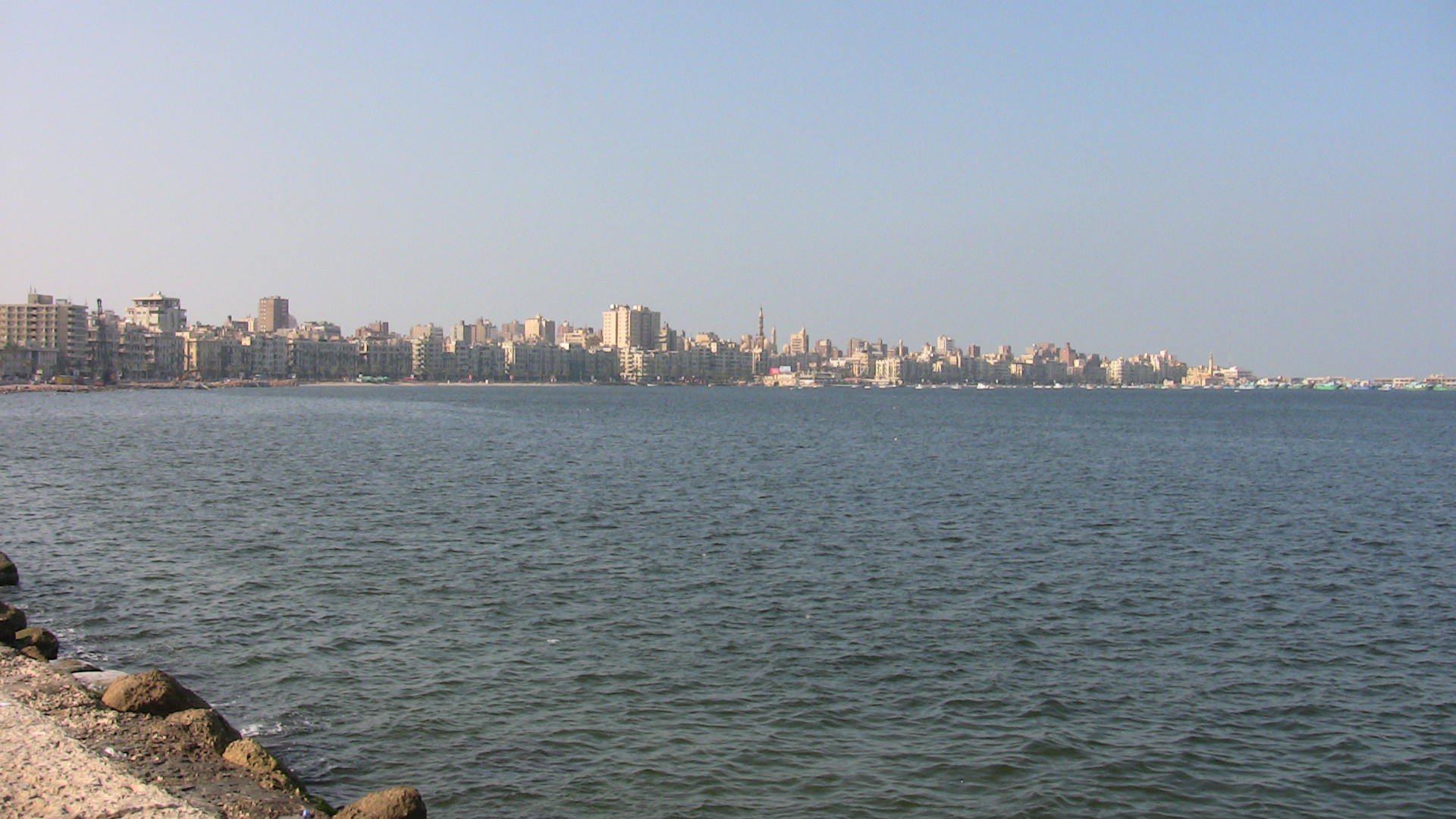The rise in sea levels due to global warming threatens Egypt’s densely populated coastal strip and could have grave consequences for the country’s economy, agriculture and industry.
Combined with growing demographic pressures, a rise in sea levels could turn millions of Egyptians into environmental refugees by the end of the century, according to climate experts.
Despite the possibility of such a scenario, scientists and government officials disagree on what contingency plans, if any, to make.
The Nile delta, one of the most heavily populated and intensely cultivated areas on earth, is considered in the 2007 fourth assessment report of the Intergovernmental Panel on Climate Change (IPCC) to be a key societal hotspot of coastal vulnerability.
According to Mohamed Al-Raey, professor of environmental physics at the University of Alexandria, a rise in sea levels of 9-59cm could lead to the inundation of many low-lying coastal zones in Egypt.
Egypt’s coastal area extends for more than 3,500km along the Mediterranean and Red Sea and is home to over 40 percent of the country’s 80 million people, most of whom live in the urban centres of Alexandria, Port Said, Damietta, Rashid and Suez.
Worst case-scenario for Alexandria
By using a coarse digital terrain model and global population distribution data, the 2007 IPCC assessment report estimated that over one million people would be directly affected by 2050 in three of the world’s megadeltas: the Ganges-Brahmaputra delta in Bangladesh, the Mekong delta in Vietnam and the Nile delta in Egypt.
Current sea level trends in Egypt
The Coast Research Institute in Alexandria is currently collecting data at three monitoring stations to measure sea level rise on Egypt’s coast: in Alexandria, Burg Al-Burullus and Port Said.
According to Ibrahim Al-Shenawy, director of the institute, “current measurements indicate a sea level rise of 1.6mm per year for Alexandria, 2.3mm for Burg Al-Burullus and 5.3mm for Port Said. These figures include sand subsidence (estimated at 0.4mm per year in Alexandria, 1.1mm in Burg Al-Burullus and 3.35mm in Port Said). The net rise of sea levels is 1.2mm in Alexandria, 1.2mm in Burg al-Burullus and 1.95mm in Port Said.”
 Photo: Martina Fuchs/IRIN  |
| Alexandria, covering about 32km of the Mediterranean sea coast, is a major tourist destination, known as "the Pearl of the Mediterranean" |
Al-Shenawy said that if in Egypt temperatures were to increase by 1.8 degrees centigrade by the year 2100, which is expected to happen, sea levels would rise 72cm in Port Said, 28cm in Alexandria, and 35cm in Burg al-Burullus.
Scientific climate projections by IPCC working groups indicate a rise in average global temperatures of 2-4.5 degrees centigrade by the end of the century.
How to respond to the threat?
The Egyptian Environmental Affairs Agency (EEAA) said that several measures could be put in place to deal with the impact on the coastal zone corridor, including beach nourishment (deposition of sand onto the beach), construction of breakwaters, tightening of legal regulations to restrict development in vulnerable areas, changes in land use and Integrated Coastal Zone Management (ICZM).
The objectives of ICZM, an approach also promoted by the UN Development Programme (UNDP) in Egypt, are to protect the coast’s natural resources and promote sustainable development. According to the European Commission, ICZM is a relatively new, multidisciplinary and evolving concept which focuses on information collection, planning, decision-making, and monitoring of implementation.
 Photo: Martina Fuchs/IRIN  |
| The Corniche promenade of modern Alexandria is home to the ancient Qaitbay fortress and the Bibliotheca Alexandrina (the new library of Alexandria). Rising sea levels would threaten their existence |
He said: “These hard structures to protect shores against sea erosion can now be used for adaptation to climate change and rising sea levels.”
But according to Al-Shenawy, “there is no urgent need at the moment to take measures against sea level rise, the situation is not alarming. The process is very slow, it’s only about a couple of millimetres per year. Only certain areas will suffer from sea level rises, not all. But we will continue our research and collect our data, otherwise we invest for nothing and too much money would be wasted.”
While a cost assessment for contingency measures has not yet been conducted in Egypt, the 2007 IPCC report suggests that adaptation costs for climate change would be much lower than post-event costs.
Some call for urgent action
In contrast to Al-Shenawy, other environmental specialists say a shift in public policies, and the implementation of national adaptation strategies to protect vulnerable areas, need to be put in place urgently.
For Al-Raey, the contingency plans suggested by the government aim to protect the tourism industry in the first place but are not directly related to the impact of climate change and global warming.
“Additional adaptation measures are needed to target climate change. This will be less expensive for the tourism industry than losing the beach completely. We are now working with different cultural organisations to raise awareness and get better answers from decision-makers,” he said.
mf/ar/cb
This article was produced by IRIN News while it was part of the United Nations Office for the Coordination of Humanitarian Affairs. Please send queries on copyright or liability to the UN. For more information: https://shop.un.org/rights-permissions
